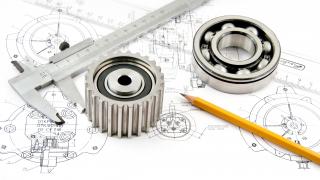
In many of our sales blogs, we talk about the features and benefits you can offer to your existing customers, as well as any potential new customers with whom you are still in the process of closing a deal. But what exactly is a feature? And what is a benefit?
I've often heard an engineer state that they're ‘not the cheapest', which is a throwaway line unless you're able to back it up with why. On the other hand, you may also want to convey why and how you can offer a competitive price. This is where features and benefits come into play. A feature is something that your company can offer – your unique selling points, if you like. A benefit is how the feature translates into an advantage to your customer – as you can imagine, these are what the buyers are most interested in. A feature illustrates how you can deliver the benefit, meaning that it’s important to get both across within the sales process.
In this blog, I’ll be giving you some common examples of features that many engineering companies offer, as well as showing you how these translate into benefits for the customer. By using both features and benefits when looking for new business, you can ensure that your company message is delivered clearly and that buyers are well-aware of how you can add value to their organisation.
Feature 1: Investment in the Latest Plant & Equipment:
Sending over your capacity/plant list is commonplace when it comes to selling engineering services, but the buyer may be unaware as to how up-to-date machinery can streamline the production process. A lot of modern manufacturing buyers are not technically-minded and therefore, it cannot hurt to point out the equipment you have that allows you to produce parts quickly and economically.
Some of the latest plant is so advanced that it will inevitably mean that components are produced to a higher standard of quality. Additional features, such as multi-axis capabilities, will also demonstrate to the buyer that you’re capable of producing complex components to spec, whilst multi-spindle machines may facilitate time and cost savings on high-volume production. Having CMM equipment in-house will also show that you’re committed to delivering accuracy and precision within your work, resulting in less defects and parts that are unsuitable for their end purpose.
Benefit Summary: Saves money by producing parts more economically, saves time by producing parts quickly and efficiently, improves quality and accuracy of components which will delight the end user and help uphold the buyer’s brand.
Feature 2: Holding Accreditations and Approvals:
Approvals such as AS 9100 and TS 16949 demonstrate proficiency within a specific industry, whilst more ‘generalised’ accreditations, such as ISO 9001, reveal that your company operates under a quality management system. Either way, it’s worth shouting about these to your prospects and customers, as it leaves the buyer reassured that they won’t run into any issues surrounding the calibre of the parts you will produce for them.
Mistakes and defects will inevitably cost the client time and money – something which can easily be avoided by getting it right the first time. Of course, this means selecting a supplier who can make this happen, which is why approvals and accreditations showcase your expertise within a certain field, as well as an exacting quality standard.
Benefit Summary: Upholds the client’s required quality standards and boosts their reputation, saves the time and money it takes to rectify mistakes by (hopefully!) getting the job done correctly the first time around.
Feature 3: Having a Secure, Steady Supply Chain in Place:
Buyers are aware that they only have control over the orders they place directly with your company – this doesn’t account for any second-tier suppliers, material stockists, or logistics companies that may also be a part of the supply chain. Therefore, by reassuring the buyer that you have a secure, steady supply chain in place, they will be left feeling reassured that you won’t leave them high and dry on account of a late materials delivery.
As we all know, holding stock is expensive, which means that an efficient supply chain will allow you to pass on cost savings to the client. This is another benefit worth pointing out, as the buyer may not be aware of it unless you say so.
Benefit Summary: A secure supply chain means a reliable service and less stockholding costs, which saves the buyer time and money.
Feature 4: The Use of ERP Systems and Automation:
More and more subcontract suppliers are turning to the use of ERP systems and it’s easy to see why. ERP (enterprise resource planning) software affords users a streamlined manufacturing process which in turn, results in cost savings throughout the supply chain. Therefore, if you use ERP software or indeed, if you have any kind of automation in place, then this is a feature that you need to advertise to your customers. Although they may not be aware that this results in a cost saving, as well as a highly efficient service, they’ll easily be able to see why once you’ve explained the benefits to them.
Benefit Summary: Allows you to offer a streamlined manufacturing process and a reliable service, which saves time and offers cost savings throughout the supply chain.
--
Which features and benefits do you use when hunting new business? Let us know by leaving us a comment below!